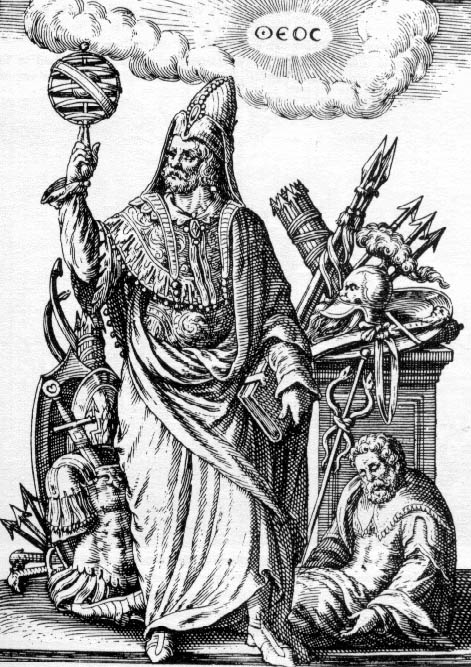 The name Hermes is derived from the Phoenician Herme which is a form of CHiram or Hiram (High-Ram) which simply means, “High Priest.” In this 2012 year of the 6th age is ruled by the horns of the Hi Ram whose priesthood through a plethora of secret societies governs the affairs of mankind to this very day.
The name Hermes is derived from the Phoenician Herme which is a form of CHiram or Hiram (High-Ram) which simply means, “High Priest.” In this 2012 year of the 6th age is ruled by the horns of the Hi Ram whose priesthood through a plethora of secret societies governs the affairs of mankind to this very day.
There are many allegorical names in history that were created to conceal the true identity of the original Lord creator, Hermes. Many allegorical names or stories that many of us have heard of such Adam (Kadomon) and Eve. He is no other than Adam or even allegorical Egyptian King names such as the most famous and controversial Pharaoh Akhenaten who had changed their religion of the Egyptians to Sun worship. He was also Moses, the religious leader, lawgiver and prophet of the Hebrew Bible, Qur’an and author of the Torah. As the name Hermes signifies the “Hi Priest”, you will also find that the names Moses, Moshe Rabbenu in Hebrew means “Moses our Teacher/Rabbi” and Akhenaten which means the “living spirit of Aten,” (The Living Son of God Sun).
There are literally dozens of these allegorical names in different languages or religions for the Son of God and Lord Hermes that I will detail in this article below.
As I mentioned above, Hermes simply means Hi Ram which signifies the High Priest. This is a name that is bestowed on a divine person that has been specifically designated as the “chosen one.” It is these chosen ones who are considered the living embodiments of God here on earth for they wear the crown and are anointed to this position of Shepherd of the Flock by witnessing their authority based on succession by blood, spiritual and soul rite. Hence, it is only the sons of the Lord who can become Shepherds of the world.
The first creator of this Hi Ram priesthood was actually a Phoenician Prince who would later become King of Damascus named Cadmus who had lived in approximately the year 1500 BC . It would be this Cadmus who we now know as Hermes, Bacchus, Dinosys, Moses and Akhenaten whose many descendants would go on to become the original founders of most all the secret mystery schools, empires and various religions that we see around the world today. He is simply known to initiates as the Lord of Heaven whose light of the son and fire through mercury are the creators of the very civilized world that we see today.
Cadmus was the Father and Founder of the Ancient City of Thebes whose followers were known as the Boetians. He was the first person to introduce the use of letters into Greece and the worship of most every single deity in the entire world were introduced by the Phoenician Cadmus, AKA the Cadmonites of Palestine, who had come into Greece from ancient Palestine 1493 years before the Christian era, and to have died 61 years after.(1)
The name Cadmus is originally derived from the Phoenicians Cadmon or Cadam-On, which denotes Cadam, meaning, The SON.
Cadmus was known to the Jews as “Enoch,” or the “Second Messenger of God.” He was also Ben Hadad*, the father of the children of Ammon. (Chart 2d.) Kgs. 15:18-20; 20; 2 Kgs. 6:24; 8:7-15; 2 Chr. 16:2-4. Ben-hadad*. king of Syria, “worshipper of Hadad,” was the son of Tabrimon and grandson of Hezion. “Hadad the son of Bedad* (,” the name of a well known Syrian deity. Hadad is Cadmus depicted in the Old Testament as Baal or sun-god of Syria, and is identified in the Assyrian inscriptions with Ramman or Rimmon. The same Hadad who is son of Bedad of Genesis xxxvi. 35, 36, who succeeded Husham in the range of Hor, and smote Midian in what afterwards became Moab. The name of his city was Avith, that is to say Abydos in Egypt. His father Bedad or Beda he calls the metallurgist, as one who was among the first to work the mines of Arabia Petrzea.
This name Beda you will find in the Bedais of Ptolemy or the Temple of Umm Beda in the Siwa Oasis where Alexander the Great was anointed the messiah, the Son of Jupiter Ammon.
In an inscription found at Ostia, which dates 177-180, Hadad of Baalbek, or Jupiter Heliopolitanus, bears the title “Angel.” By comparing this inscription with those found in Baalbek the conclusion has been drawn that the Baal of Heliopolis was called an “Angel.” On some monuments he is represented as an eagle, carrying in his talons the wand of Hermes. This wand is the symbol of Hermes as Psychopompos.(2)
He brought the alphabet to the Greeks who would worship him under the name Caduceus or Hermes who in Greek mythology, Hermes Psychopompos carries the spirits of the dead to Hades.
To the Roman Latins he was worshiped under the planet Mercury because his body is nearest to the sun. Please notice him with his out stretched finger pointing to the sun with a winged helmet, feet and his magic wand.
One of the most common titles of Buddha is Codom or Cadam or Gautam which is no other than the Phoenician Prince, Cadmus.
He is also the Pharaoh Akhenaten, Aten-ra, Amon Ra or Taut/Thoth to the Egyptians
Odin or Woden to the Scandinavian/Anglo Saxons
All Father or Alföðr to the Vikings
Votan or Dan to the Mayans Wodan to the Mexicans
Cadmus is the founder of the Hivites of the Old Testament and Levites of the New Testament which Hivite signifies a serpent in the language of Syria and Levite in Hebrew. The same English poet who lived in England, Caedmon (KAD muhn) who had brought literature to the English in the 7th century.
He is the Lord of Lords, King of Kings, The Good Shepherd of his Sheep, The Witness of the Bible and Red Dragon of Revelations.
Please be certain when all these allegorical names are spoken or written like those I have mentioned above and also the ancient customs and rituals that are persistent among mankind, even where no written proof survives, that the true name is Cadmus. Let us not forget that there is nothing new under the “Son” and when this is said, they are speaking with names such as Amon Ra, Enoch, Baal, Hermes, Buddha, Woden and Mercury, they are referring to the original High-Ram or creator of the world, Cadmus or Hermes.
The Lord of Light who the Freemasons have identified with their own Hiram Abiff.
33rd Degree Scottish Rite Freemason and author of Morals and Dogma, 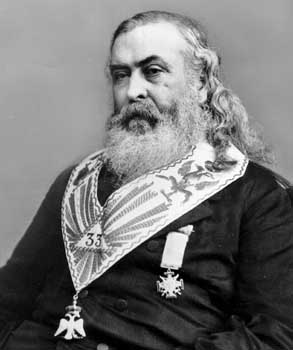 Albert Pike had this to say about Hermes –
Albert Pike had this to say about Hermes –
“We worship a God, but it is the God that one adores without superstition. To you, Sovereign Grand Inspectors General, we say this, that you may repeat it to the brethren of the 32nd, 31st and 30th degrees: The Masonic Religion should be, by all of us initiates of the higher degrees, maintained in the Purity of the Luciferian doctrine… Yes, Lucifer is God… The true and pure philosophical religion is the belief in Lucifer… The Ancient Astronomers saw all the great Symbols of Masonry in the Stars. Sirius still glitters in our Lodges as the Blazing Star… He was Sirius or the Dog-Star, the friend and counselor of Osiris, and the inventor of language, grammar, astronomy, surveying, arithmetic, music, and medical science; the first maker of laws; and who taught the worship of the Gods, and the building of temples…”
Simply put, Albert Pike was either partially wrong with his explanation of Hermes and his star or this was purposely published to mislead readers. The reason being is that Hermes does not represent the star Sirius. He represents the ultimate light of the Lord, the sun and it is his wife Isis or Ishtar who we now know as Easter whose star is represented by Sirius or the Dog Star. The ruling star that mankind is currently governed by.
Manly P. Hall calls CH(ir)AM, the father of the Ethiopians, Khemetians, Canaanites,  Libyans, etc. and had this to say about Hermes in his most famous book, The Secret Teachings of All Ages;
Libyans, etc. and had this to say about Hermes in his most famous book, The Secret Teachings of All Ages;
The Canaanites were called the Phoenicians by the Greeks, who have told us that they had Hermes for one of their kings. There is a definite relation between Chiram and Hermes.
In the word Hermaphrodite, (a word invented by the old philosophers), we find Hermes changed to Herm, signifying Chiram, or the Universal Agent, and Aphrodite, the passive principle of humidity, who is also called Venus, and is said to have been produced and generated by the sea.
We also read that Hiram (Chiram), or the Universal Agent, assisted King Solomon to build the temple. No doubt as Solomon possessed wisdom, he understood what to do with the corporealized Universal Agent. The Talmud of the Jews says that King Solomon built the temple by the assistance of Shamir. Now this word signifies the sun, which is perpetually collecting the omnipresent, surrounding, electrical fire, or Spiritus Mundi, and sending it to us in the planets, in a visible manner called light.
This electrical flame, corporealized and regenerated into the Stone of the Philosophers, enabled King Solomon to produce the immense quantities of gold and silver used to build and decorate his temple.
Saint Bede on Hermes: – Hermes wrote the book which is called the Shepherd, in which is contained the command of the angel that Easter should be celebrated on Sunday. Polycarp came to Rome, and cleansed from the stain of heresy many of those who had lately been corrupted by the doctrine of Valentinus and Cerdo.
When Bede, Hall and Pike speak of Hermes, they are using his allegorical names for the Phoenician Prince, Cadmus, the founder of the Dragon Lords of Thebes whose soldiers the Hivites Mt said to be changed into Serpents, because the fame Word both in Syriack and Arabics signifies a Serpent. This is where you will see conspiracy theorists like David Icke call the elites reptilians. These successors of Cadmus would be the Phoenician priests of Baal (the Sun) from Canaan who then later became the Druids and Christian Culdees who would spread their seeds of enlightenment in every country on earth.
Please meet the original Freemason, Knight and Grand Master of the Secret Mysteries, Hermes Trismegistus (Thrice Greatest Hermes) or Hiram Abiff
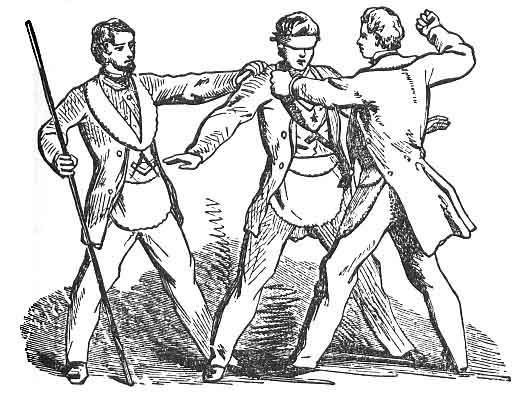 Hermes is the initiator, an intermediate agent between mankind, and the superior divinity who at times assume the human figure with wings, save that Greek art placed the latter on the heels of its god; just as, in the Caduceus, it changed the position of the wings of the Winged Globe. (2)Please notice the eight spoke wheel of the chariot which we will find in the 8 pointed Cross Pattee of the Knights Templars and Knights of Malta. Also take note of the lion whose “right” hand and “right” eye have been wounded.
Hermes is the initiator, an intermediate agent between mankind, and the superior divinity who at times assume the human figure with wings, save that Greek art placed the latter on the heels of its god; just as, in the Caduceus, it changed the position of the wings of the Winged Globe. (2)Please notice the eight spoke wheel of the chariot which we will find in the 8 pointed Cross Pattee of the Knights Templars and Knights of Malta. Also take note of the lion whose “right” hand and “right” eye have been wounded.
The Greeks and Herodotus had called Hermes, Mercury. In Greek, Caduceus means magic wand and why we will always see him carrying his magic double DNA serpent wand which is the symbol of immortality.
In Freemasonry the rod of the Senior Deacon, or the Master of Ceremonies, is but an analogue of the Hermean Caduceus. This officer, as leading the aspirant through the forms of initiation into his new birth or Masonic regeneration, and teaching him in the solemn ceremonies of the Third Degree the lesson of eternal life, may well use the magic wand as a representation of it, which was the attribute of that ancient deity who brought the dead into life.
You will actually see this symbol of Mercury in the modern day medical establishment who of course was created by Hermes (Cadmus) and his many descendants.
The same descendants who had previously formed the first Christian charity fraternity, the Saint John’s Hospitalers
To this day they operate many noble medical charities such as the Shriners Hospital through the Freemasonic body of “The Ancient Arabic Order of the Nobles of the Mystic Shrine, also commonly known as Shriners .
MORE PICTURES AND SOURCES TO VERIFY MY FINDINGS AND OTHER INFORMATION = NOTHING NEW UNDER THE SON/SUN
Here are some pictures of the various descendants of Cadmus, the High Priest (HI RAM) of the World who has went by many different names, empires, kings and images, but you can always find the HI RAM throughout history by the Horns they proudly adorn on their heads as a symbol for the Lord.
Here we have Cadmus (Hermes) as the God Jupiter Hammon in an ancient drawing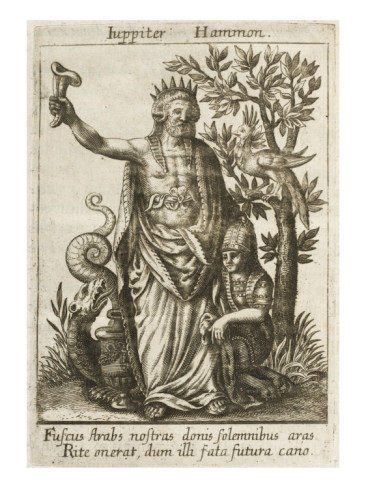 This Leopard Head adorned with the Horns was found in the tomb of King Tut at or around the time when Hermes had lived
This Leopard Head adorned with the Horns was found in the tomb of King Tut at or around the time when Hermes had lived
This is Moses, the Hivite/Levite Serpent with horns depicted on his head in this piece of art
Here is Alexander the Great, as Hi Ram depicted on an ancient Greek coin
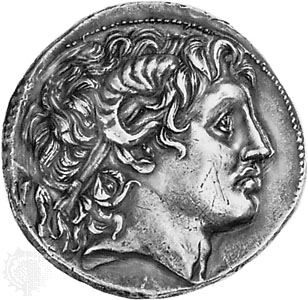 Here we have no other than Pan, Son of Hermes and the defenseless Scape Goat
Here we have no other than Pan, Son of Hermes and the defenseless Scape Goat
Cadmus, the Cadmonites and Hivites;
The Word Cadmus in Hebrew, signifies One who came from the East, and seems to determine him to have been of the Race of (a) the Cadmonites, which was a People in Palestina, the fame with the Hivites, who anciently descended from (b) Canaan the Son of Ham. Harmonia deriv’d her Name from Mount Hermon in that Country. Many of these Cadmonites inhabited (s) Mount Hermon, which was the most eastern Part of the Land of Canaan, and signifies the lame, as (d) Tabor lay in, and signify’d, The IVeji. His Soldiers the Hivites Mt said to be changed into Serpents, because the fame Word both in Syriack and Arabics signifies a Serpent. He was the Improver of Brass, and therefore (e) the Stone of which it was made, was call’d Cadmia, and the fame Word in the Hebrew Language signifies both Brass and a Serpent.
It has been no part of our task to attempt to trace the Hermes-idea along the line of pure Greek descent, for this would have led us too far from our immediate subject. There is, however, one element of that tradition which is of great interest, and to which we may draw the attention of the reader in passing. The beautiful idea of the Christ as the ” Good Shepherd” is familiar to every Christian child. Why the Christ is the Shepherd of all men is shown us by this first of our marvellous treatises. In it we have the universal doctrine apart from any historical dogma, the eternal truth of an ever-recurring fact, and not the exaggeration of one instance of it.
The representation of Christ as the Good Shepherd was one of the earliest efforts of Christian art; but the prototype was far earlier than Christianity—in fact, it was exceedingly archaic. Statues of Hermes Kriophoros, or Hermes with a ram or lamb standing beside him, or in his arms, or on his shoulder, were one of the most favourite subjects for the chisel in Greece. We have specimens dating to the archaic period of Greek art.1 Hermes in these archaic statues has a pointed cap, and not the winged head-dress and sandals of later art. This type in all probability goes back to Chaldaean symbolic art, to the bearers of the twelve “signs of the zodiac,” the “sacred animals.” These were, in one human correspondence, the twelve
1 See Roscher’s Lexikon, art. “Hermes.” “Hermes in der Kuust”—” Periode des Archaismus.”
septs or classes of priests. Here we see that the Greek tradition itself was not pure Aryan even in its socalled archaic period. Chaldaea had given of her wisdom to post-diluvian Greece, even as she had perchance been in relation with Greece before the “flood.” Here, then, we have another element in the Hermes-idea. In fact, nowhere do we find a pure line of tradition; in every religion there are blendings and have been blendings. There was unconscious syncretism (and conscious also) long before the days of Alexandria, for unconscious syncretism is as old as race-blendings. Even as all men are kin, so are popular cults related; and even as the religion of nobler souls is of one paternity, so are the theosophies of all religions from one source.
One of the greatest secrets of the innermost initiated circles was the grand fact that all the great religions had their roots in one mother soil. And it was the spreading of the consciousness of this stupendous truth which subsequently—after the initial period of scepticism of the Alexandrian schools—gave rise to the many conscious attempts to synthesise the various phases of religion, and make ” symphonies ” of apparently contradictory philosophical tenets. Modern research, which is essentially critical and analytical, and rarely synthetical, classifies all these attempts under the term ” syncretism,” a word which it invariably uses in a depreciatory sense, as characterising the blending of absolutely incompatible elements in the most uncritical fashion. But when the pendulum swings once more towards the side of synthesis, as it must do in the coming years—for we are but repeating to-day in greater detail what happened in the early centuries— then scholarship will once more recognise the unity of religion under the diversity of creeds and return to the old doctrine of the mysteries.
Concerning the Persian Mysteries of Mithras;
The Original of the Persian Mysteries of Mithras is not easy to be traced. It is probable that they were brought into Babylonia, and thence into Persia, from Egypt: for they seem to have been the Mysteries of Osiris, who was the Mithras of the Persians.
Servius, in his Commentary on the first Book of Virgil’s Æneid, saies, Mithras was the Son of Belus. Now the Egyptian Belus, the Son of Neptune and Libya, and Brother of Agenor the Father of Cadmus, went with a Colony out of Egypt and settled in Bahy~ Ionia, upon the River Euphrates, and there instituted an (30) Order of Priests after the Manner of the Egyptians. So, if Belus was the Institutor of the Ceremonies ot Mithras, he might for that Reason be calle’d the Father ot Mithras: and if this was so, the Mysteries of Mithras were instituted about the Year before Christ 1540, not long after Belus settled in Babylonia. (5)
The Many Names of Cadmus/Hermes:
All the infinitely varied forms of the ” sun-god,” had a common origin in the primeval myths of the Akkadians, Assyrians, and Babylonians; which embodied the earliest corruptions of Biblical traditions: and the primitive “Budha” of India, besides combining the characteristics of various more ancient divinities, was invested with many Biblical traits. Hence it is that Buddha has come to be identified, by different writers, with so many sacred, and mythical personages: with the Biblical Noah, Nimrod, and Moses; with the Assyrian Bar, Bel or Baal, Nebo, and Sver or Sur; with the Egyptian Sur, or Osiris, Noub or Noum, Thoth, and Sesostris or Sheshak; with the Persian Auramazda, Bhaga, and Mithras; the Greek Dionusos, lacchos or Bacchus, Pur, Hermes, Helios, and Mithras; the Brahmanical Pur, Surya or Mitra, Bhaga, Bhava, Budha, Agni, Indra, Jagannath, and Krishna; and the Scandinavian and Mexican Woden or Votan!
The identity of the earlier “Budha ” of India with Mercury or Hermes the Roman and Greek representatives of the Egyptian Taut, or Thoth—is not only indicated by the resemblance of their symbols, if not of their names (see p. 87), but by their parentage. The Egyptian Hermes (Thoth) was the son of Osiris by Maya: Mercury was the son of Jupiter (the Vrihaspati of Brahmanical mythology) by the Pleiad Maia: and Buddha, the deified son of Suddhodhana Siiryavansi, was also the son of Maya.Q
Then, again, we have the significant fact that Mercury, Budha, Woden, and the Mexican Votan, were all worshipped on the same day of the week, the middle day, Wednesday I (*)
Sir A. Cunningham, in noticing some of these ” numerous and striking ” coincidences, further compares Buddha (who is called “Bhaga,” the dispenser, or distributor ; see p. 99), with the ancient Welsh deity ” Buddwas,” called ” the dispenser of good.” (“The Bhilsa Topes,” Pref. vi.-viii.)
Among many other points of resemblance between Buddha, and the Brahmanical sun-god, Siirya, Aditya, Bhaga, Bhava, or Mitra, one of the most striking is that figures of Buddha (as well as those of Jaina Tirthankaras) often have below their thrones, or cars, the single wheel which, in representations of Siirya, is his chariot-wheel. The shape of this is as shown in Fig. 17 of Plate XL. ; and its Sanskrit name, “bhamandala,” means a circle, crown, or diadem of light; or a garland of solar rays.
Professor Wilson, in his notes to the “Vishnu Purana ” (p. 218, Note 5), says:
“In images of the sun, two equal and semi-circular axles connect a central wheel with the sides of the car “: and the Purana itself describes it as ” a wheel with
(‘) According to the Brdhmanical Piiranas, the planetary ” Budha,” or Mercury, is the ninth avata”ra of Vishnu; and the illegitimate son of Soma, the moon, by Tdra (a star), ths wife of Vrihaspati, the Indian Jupiter. The object of the incarnation was to beguile the too-powerful Daityas from their pure Vedic worship; and thus to secure their defeat by the gods. (“Vish. Purdn.” 340, 341, Note 8, and 393.) The legend is a clumsy allusion to the rise of the Buddhist and Jaina sects.
(3) The learned Humboldt, in an unpublished letter, quoted in the ” New York Weekly Tribune” of 22nd October, 1853, said, ” certainly the coincidence of the naming of the third day of our week, after Votan, Woden, and Buddha, in three different parts of the world, is a. very interesting one; and it seems to be about time to get some critical insight into the matter.

Moe is the founder of GnosticWarrior.com. He is a father, husband, author, martial arts black belt, and an expert in Gnosticism, the occult, and esotericism.

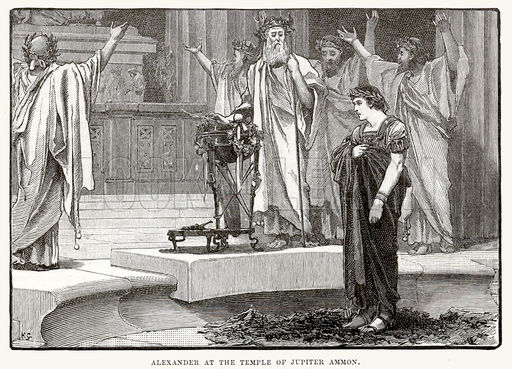
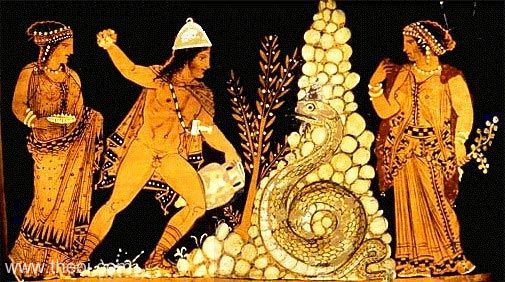

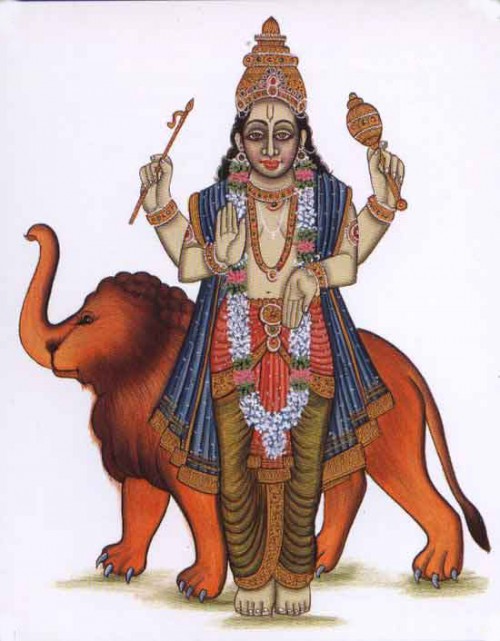


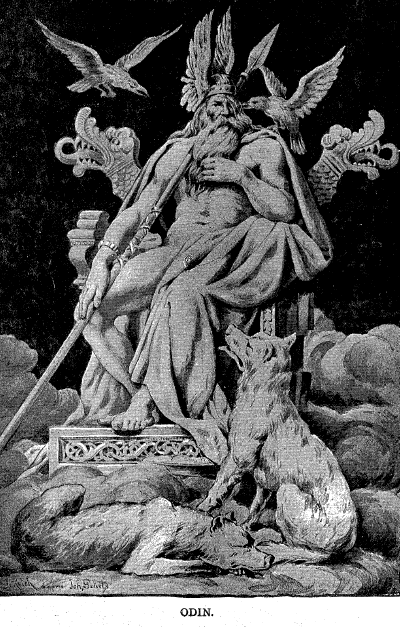
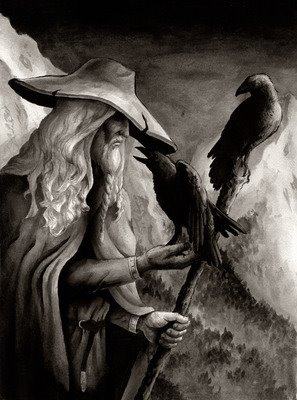
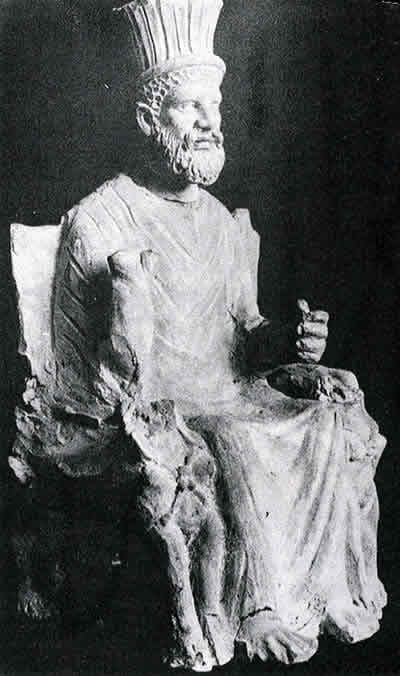
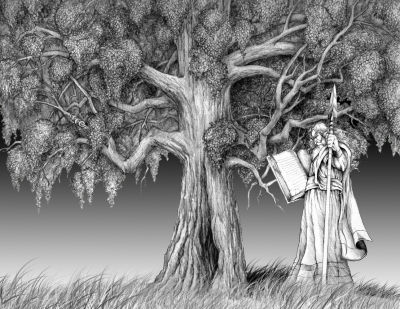
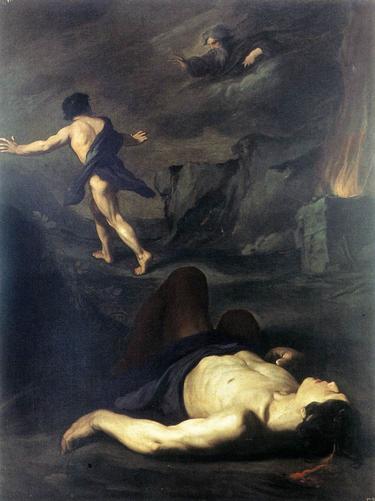
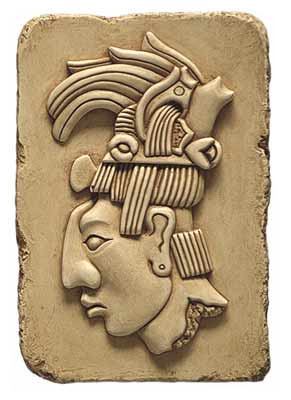
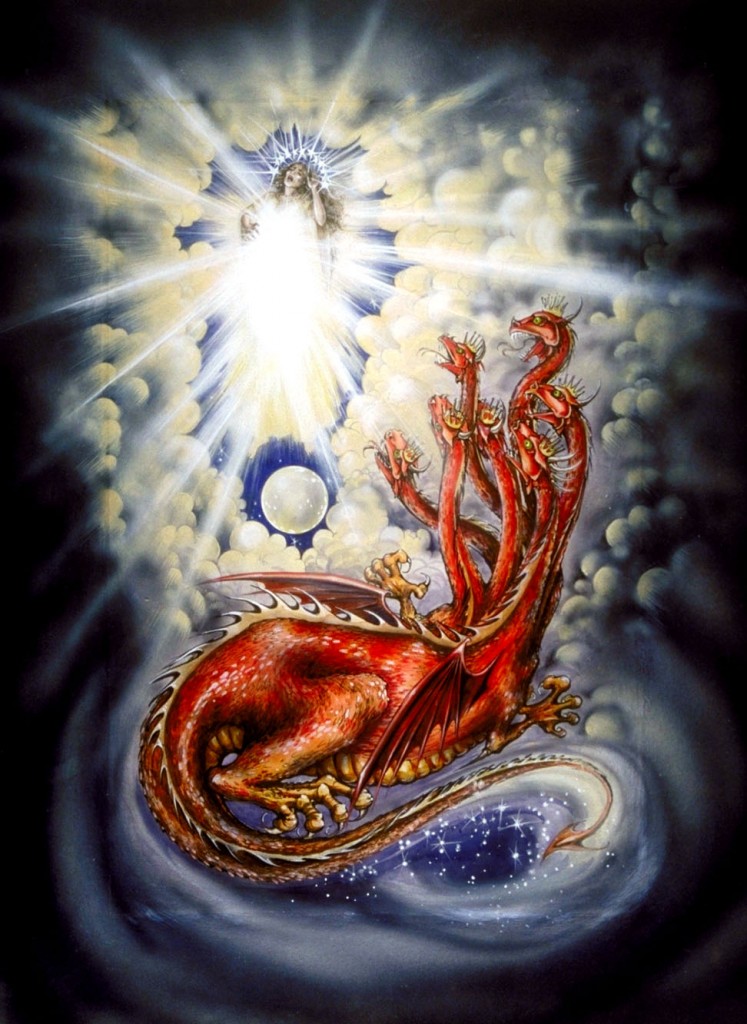
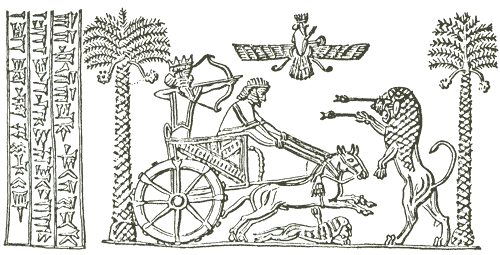
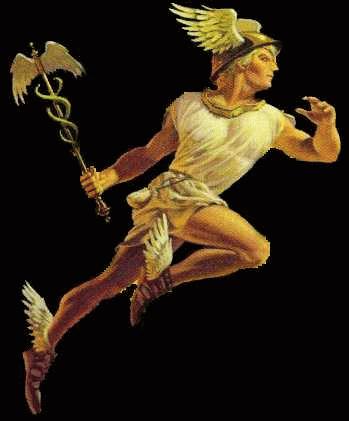
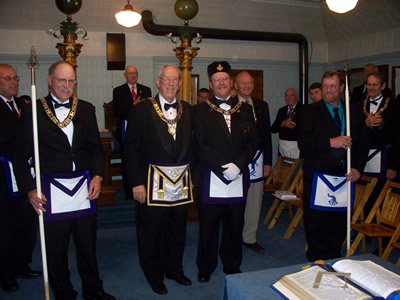

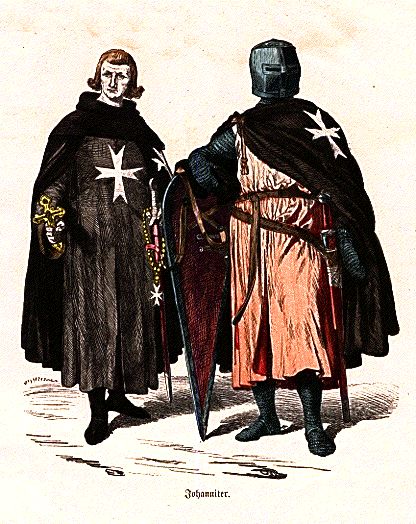


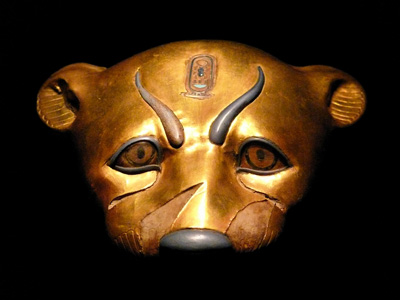
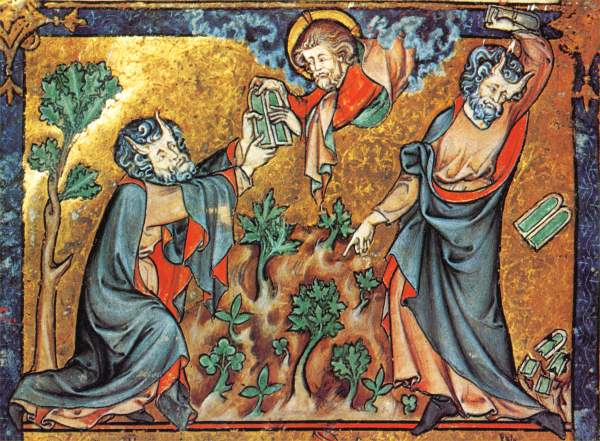
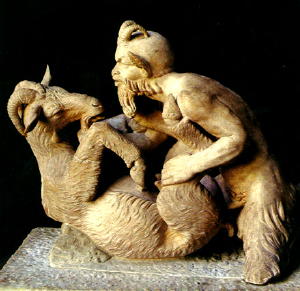
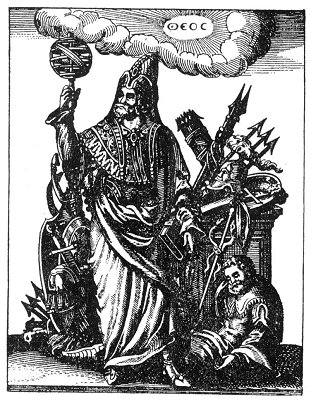
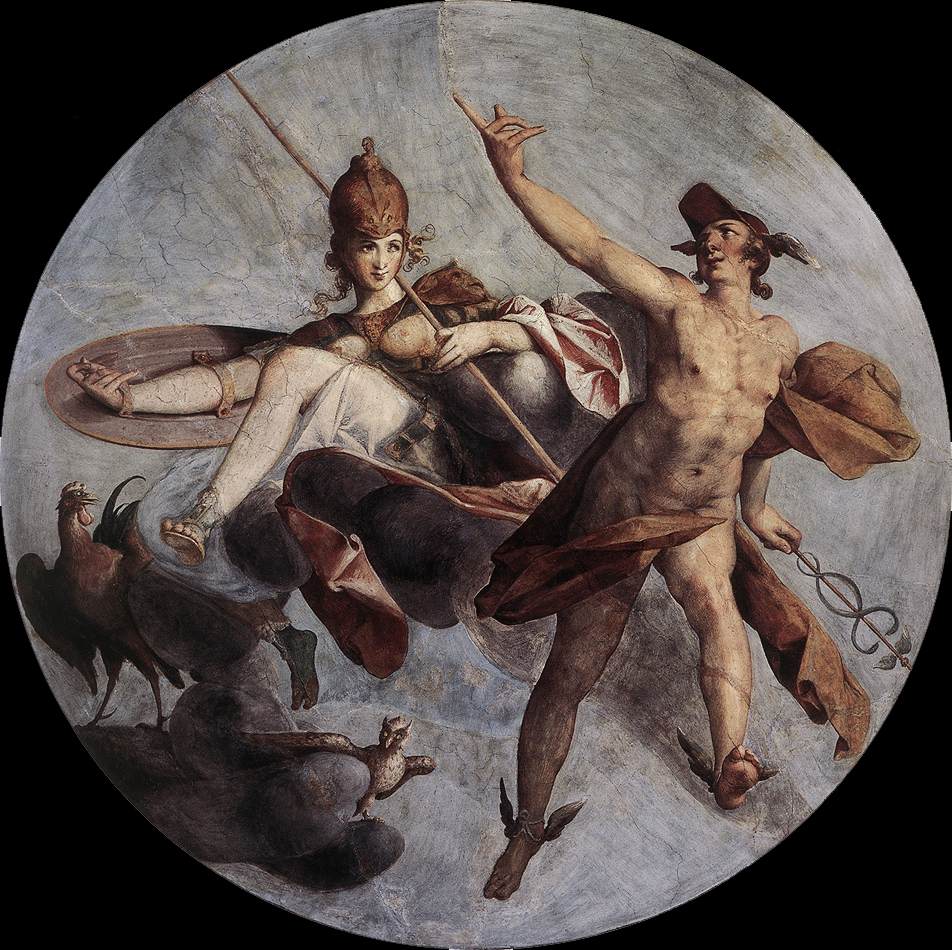
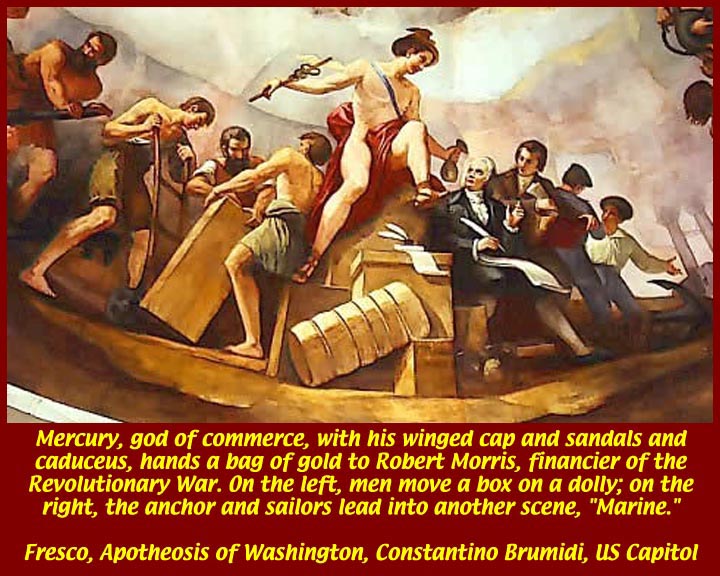
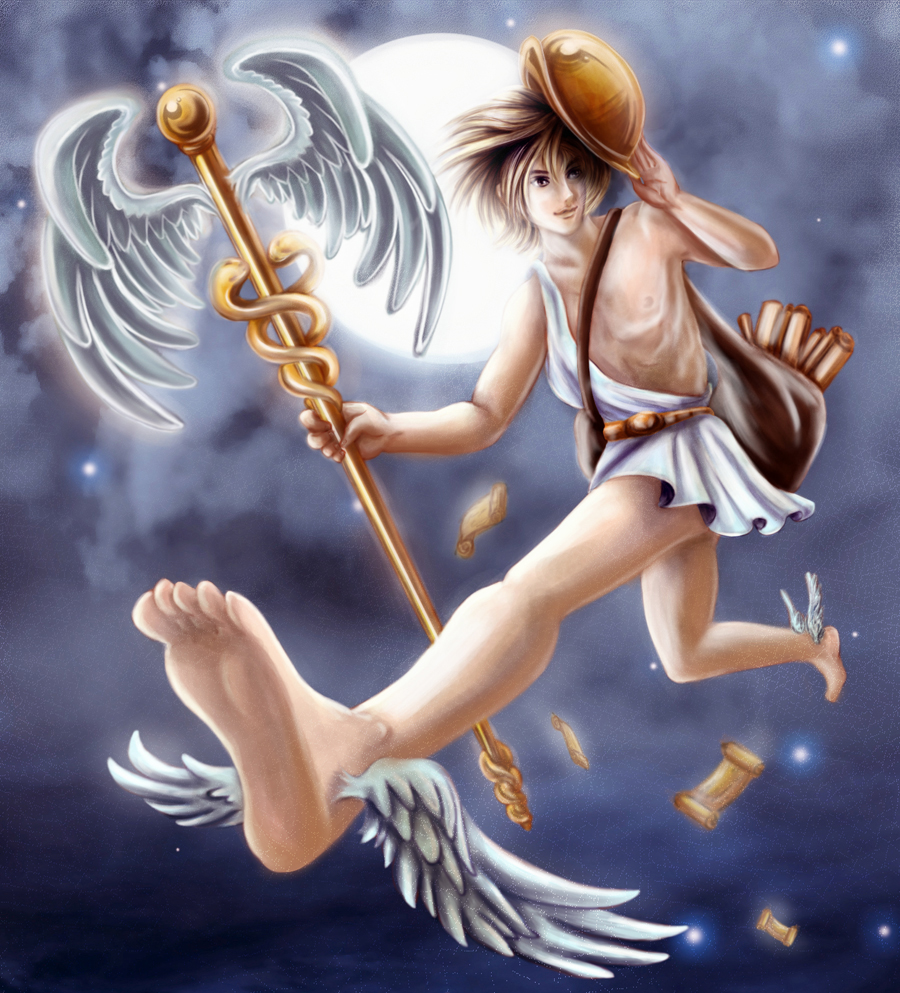
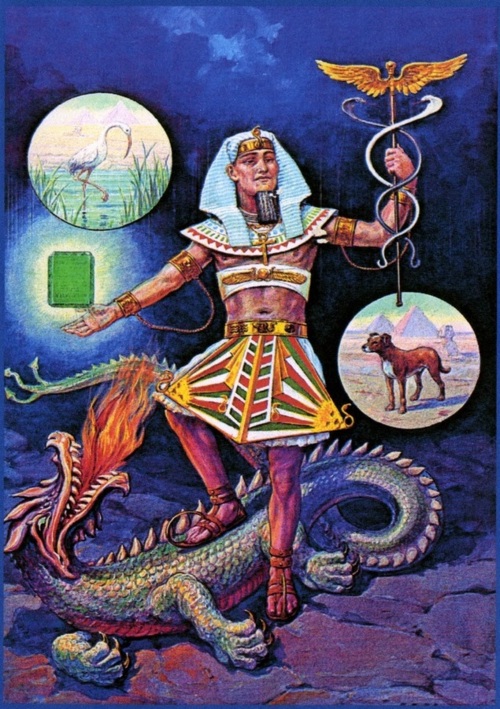
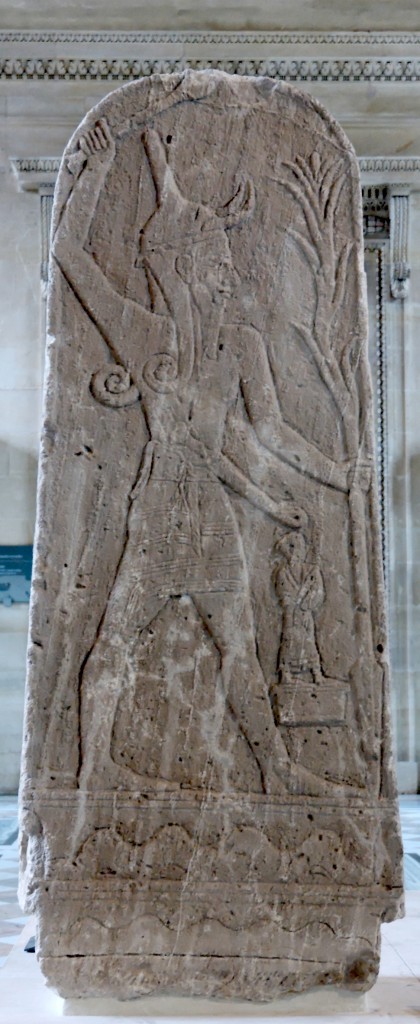
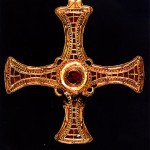

In your newer articles, you said that Hermes is the father of Ithobaal. I suppose he’s not Akhenaten then.